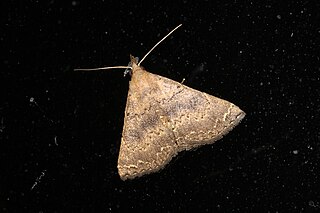
Hypena is a genus of moths in the family Erebidae. It was first described by Franz von Paula Schrank in 1802. These non-migratory moths overwinter as pupae and almost never estivate as adults.

Omiodes is a moth genus in the family Crambidae. Several species are endemic to Hawaii.

Woodland is a historic house on the grounds of Sam Houston State University in Huntsville, Texas. Built in stages beginning about 1847, it was the residence of Sam Houston from 1847 to 1859. The house is now part of Sam Houston Memorial Museum, and is a National Historic Landmark.

Dichocrocis is a genus of moths of the family Crambidae. The genus was described by Julius Lederer in 1863.

Glyphodes is a genus of moths of the family Crambidae described by Achille Guenée in 1854.

Pycnarmon is a genus of moths of the family Crambidae described by Julius Lederer in 1863.

Psara is a genus of moths in the family Crambidae described by Snellen in 1875.

Patania is a genus of moths of the family Crambidae described by Frederic Moore in 1888.

Poliobotys is a monotypic moth genus of the family Crambidae described by Jay C. Shaffer and Eugene G. Munroe in 2007. Its single species, Poliobotys ablactalis, was described by Francis Walker in 1859. It occurs throughout South-east Asia, including Réunion, Australia, Hong Kong and Africa.

The Chrysauginae are a subfamily of snout moths. They are primarily Neotropical and include about 400 described species.
Agrioglypta excelsalis is a moth in the family Crambidae described by Francis Walker in 1866. It is found on Sulawesi, Lifou Island, as well as in Bhutan, Thailand, Sumatra, Papua New Guinea, Samoa and in Australia, where it has been Western Australia, Queensland and northern New South Wales.

Agrioglypta zelimalis is a moth in the family Crambidae described by Francis Walker in 1859. It is found in India, Sri Lanka, Indonesia, New Caledonia and Australia, where it has been recorded in Queensland.
Members of the New South Wales Legislative Council who served from 1856 to 1861 were appointed for a fixed term by the Governor on the advice of the Premier. The 1855 Constitution of New South Wales provided that the first council following self-government was for a period of 5 years from the first appointments, but that subsequent members would be appointed for life. The first appointments were on 13 May 1856 so that the first term lapsed on 13 May 1861. The number of members of the council had to be at least 21 and subsequent appointments also lapsed on 13 May 1861. The President was Sir Alfred Stephen until 28 January 1857, John Plunkett until 6 February 1858 and then Sir William Burton.
Hadennia jutalis is a moth of the family Noctuidae first described by Francis Walker in 1859. It is found in India, Sri Lanka, Thailand, Malaysia, Laos, Vietnam, Myanmar and the Andaman Islands.
Hadennia mysalis is a moth of the family Noctuidae first described by Francis Walker in 1859. It is found in Sri Lanka, Japan, Taiwan, Thailand, Borneo, Myanmar and the Andaman Islands.

Hipoepa biasalis is a moth of the family Noctuidae first described by Francis Walker in 1859. It is found in Oriental tropics of India and Sri Lanka to Taiwan, Sumatra, Borneo, the Philippines and Sulawesi.

Progonia oileusalis is a moth of the family Noctuidae first described by Francis Walker in 1859. It is found in Sri Lanka, Borneo, India, Taiwan, Japan and the Philippines.

Margaroniini is a tribe of the species-rich subfamily Spilomelinae in the pyraloid moth family Crambidae. The tribe was erected by Charles Swinhoe and Everard Charles Cotes in 1889, originally as family Margaronidae.














